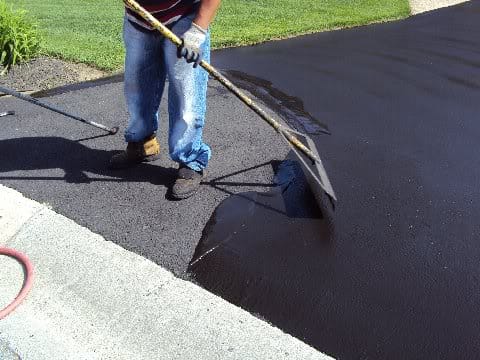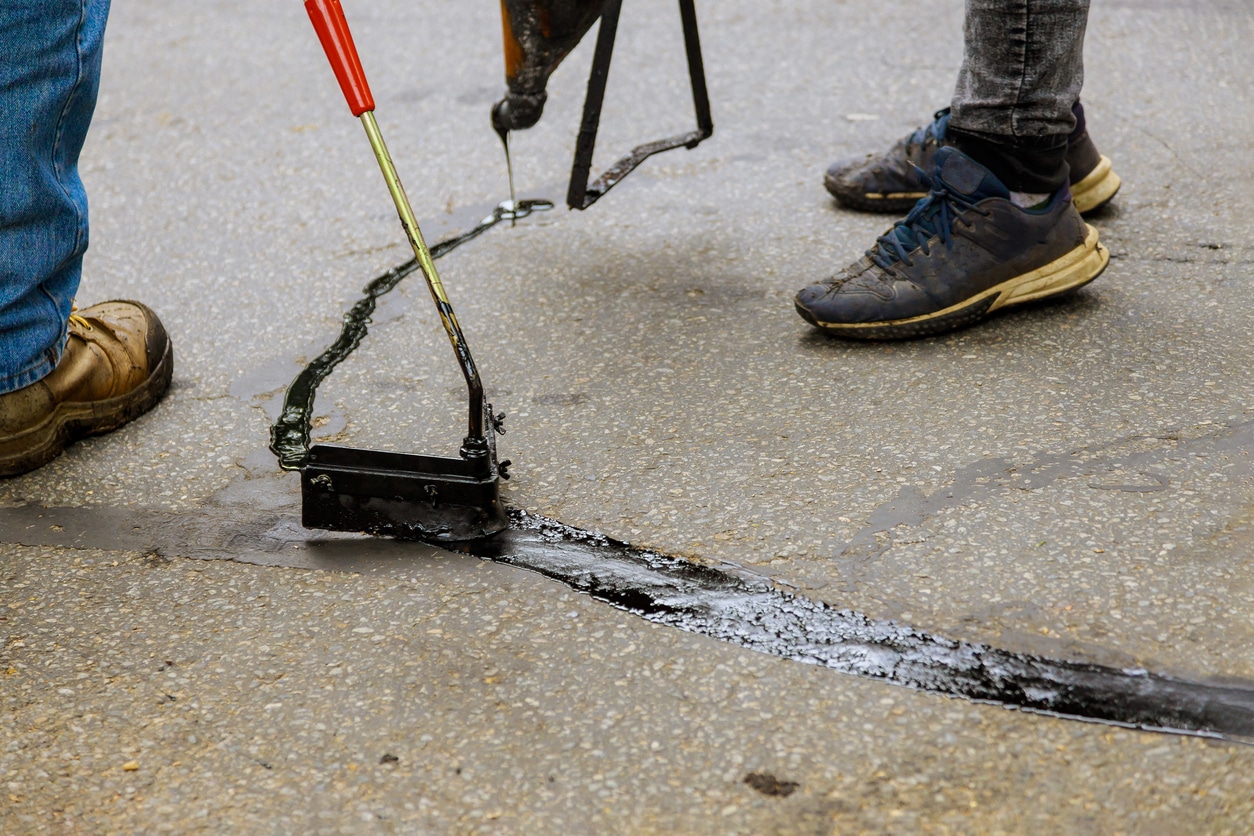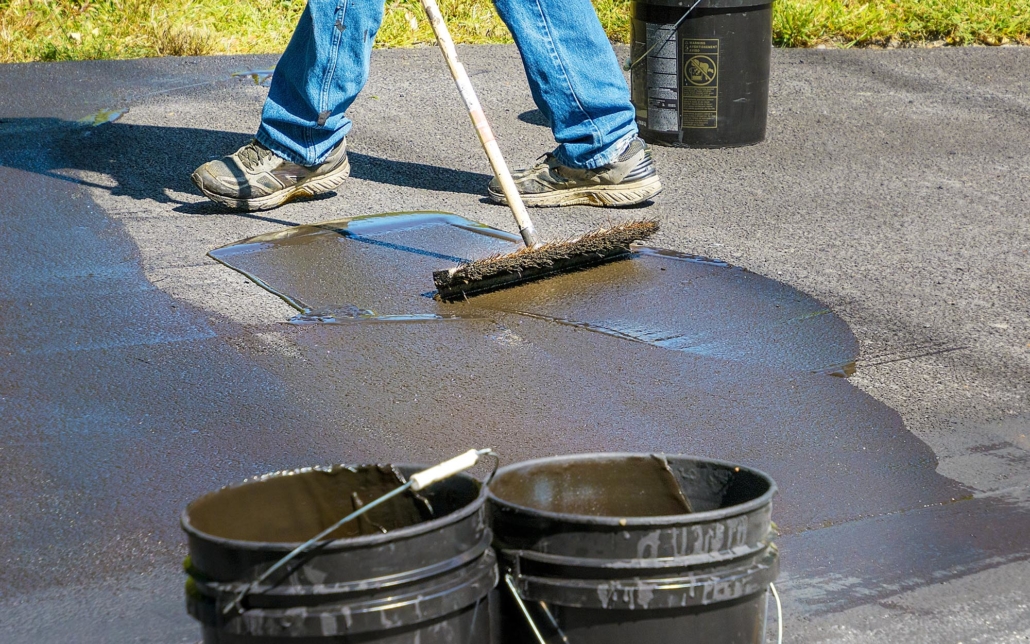Unlock the Keys of Asphalt Sealing: Optimizing Warm Mix Asphalt Longevity
Unlock the Keys of Asphalt Sealing: Optimizing Warm Mix Asphalt Longevity
Blog Article
Warm Mix Asphalt: A Sustainable Option for Pavement
Hot Mix Asphalt (HMA) has actually emerged as a leading sustainable choice for sidewalk options, offering a myriad of environmental benefits and cutting-edge innovations. Its ability to minimize and recycle products energy usage presents an engaging case for its fostering in roadway construction projects. Furthermore, the lasting performance and sturdiness of HMA make it a preferred option for infrastructure growth. As the demand for environment-friendly building practices expands, checking out the subtleties of HMA's sustainability can supply useful insights right into the future of sidewalk remedies.
Ecological Advantages of Warm Mix Asphalt

Furthermore, Hot Mix Asphalt aids to reduce city warm island impacts. Its dark color takes in sunshine, minimizing the quantity of warm mirrored back into the environment contrasted to lighter-colored pavements. This can decrease ambient temperature levels in metropolitan locations, decreasing the need for air conditioning and eventually decreasing energy intake.
Furthermore, Hot Mix Asphalt adds to boosted stormwater monitoring. Its porous nature enables water to penetrate the sidewalk and reenergize groundwater supplies, minimizing drainage and the threat of flooding. These ecological advantages make Warm Mix Asphalt a lasting choice for paving roads and highways.
Power Performance in HMA Manufacturing
Is power efficiency a vital aspect in the manufacturing of Warm Mix Asphalt (HMA)? Power plays a substantial duty in the manufacturing of HMA, affecting both cost and ecological sustainability. One crucial aspect of power effectiveness in HMA production is the usage of warm mix asphalt (WMA) technologies.
Additionally, improvements in plant modern technologies have led to even more energy-efficient HMA manufacturing processes. By enhancing power usage in HMA production, the sector can reduce its carbon footprint while keeping high-quality pavement products.
Recyclability of Warm Mix Asphalt
The recyclability of Hot Mix Asphalt (HMA) is a critical facet of its sustainability and lasting environmental effect. HMA is just one of one of the most recycled materials in the United States, with over 100 million bunches of recovered asphalt sidewalk (RAP) being recycled annually in new pavement building. Reusing HMA supplies several environmental benefits, such as minimizing the demand for virgin products, decreasing power consumption during production, and reducing the amount of waste sent to garbage dumps.
The process of recycling HMA entails milling the existing pavement, squashing it right into smaller items, and blending it with new accumulation and asphalt binder to develop a recycled mix. Generally, the recyclability of HMA plays a considerable role in advertising sustainable practices within the sidewalk market.

Long-Term Efficiency of HMA
Asphalt pavements demonstrate toughness and strength over an extensive duration, mirroring the lasting efficiency of Warm Mix Asphalt (HMA) The durability of HMA can be associated to its capability to stand up to hefty web traffic tons, extreme weather condition problems, and the impacts of aging. Research studies have shown that well-designed and properly created HMA pavements can last for twenty years or even more with normal upkeep. The secret to making best use of the lasting efficiency of HMA lies in using top quality materials, adhering to ideal methods in building, and carrying out effective upkeep methods. Appropriate drainage, regular assessments, and timely repairs are crucial for maintaining the structural integrity of HMA sidewalks in time. Additionally, innovations in HMA innovation, such as the use of polymer-modified binders and cozy mix asphalt, have further improved the sturdiness and longevity of HMA sidewalks. By prioritizing top quality construction and upkeep methods, HMA remains to show itself as a cost-effective and lasting solution for durable pavement facilities.

HMA: Resilience and Sustainability
Demonstrating both longevity and sustainability, Hot Mix Asphalt (HMA) has actually ended up being a cornerstone in the building and construction of lasting sidewalk infrastructures - commercial parking lot paving. HMA's toughness stems from its capacity to endure hefty loads, extreme climate condition, and high web traffic quantities, making it a trustworthy choice for roads, freeways, and flight terminal paths. The composition of HMA, which normally includes aggregates, binder, and filler, plays a crucial function in boosting its longevity and resistance to tear and put on
Moreover, HMA's sustainability depends on its recyclability and energy-efficient manufacturing procedure. The ability to reuse recovered asphalt sidewalk (RAP) in new HMA mixes minimizes the need for virgin materials and reduces the environmental influence of sidewalk construction and maintenance. Furthermore, the power performance of producing HMA lies in its lower mixing temperature levels contrasted to various other sidewalk products, leading to decreased energy intake and greenhouse gas exhausts.
Conclusion
In verdict, warm mix asphalt (HMA) supplies a lasting remedy for sidewalk with its eco-friendly characteristics. HMA's recyclability, energy efficiency in production, and long-term resilience make it an environmentally friendly option for road building. By saving natural resources, decreasing waste, and lowering greenhouse gas emissions, HMA plays a crucial role in advertising sustainability in framework growth. Its capacity to alleviate metropolitan warm island effects even more emphasizes its relevance in developing durable and ecologically conscious pavement systems.
HMA is one of the most recycled materials in the United States, with over 100 million loads content of redeemed asphalt pavement (RAP) being recycled yearly in brand-new sidewalk construction.The procedure of recycling HMA visit entails grating the existing pavement, squashing it into smaller sized pieces, and blending it with new accumulation and asphalt binder to create a recycled mix.Asphalt sidewalks demonstrate longevity and durability over an extended period, mirroring the long-lasting efficiency of Hot Mix Asphalt (HMA) In addition, developments in HMA modern technology, such as the use of polymer-modified binders and cozy mix asphalt, have additionally enhanced the toughness and longevity of HMA pavements. The capacity to reuse recovered asphalt sidewalk (RAP) in new HMA blends reduces the demand for virgin products and minimizes the environmental influence of browse this site pavement building and upkeep.
Report this page